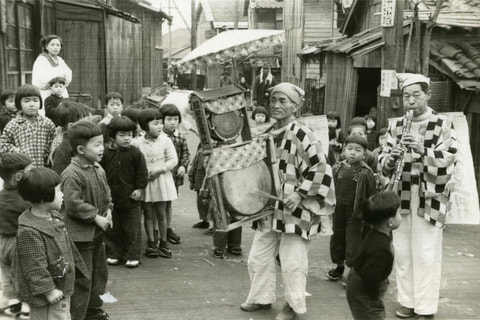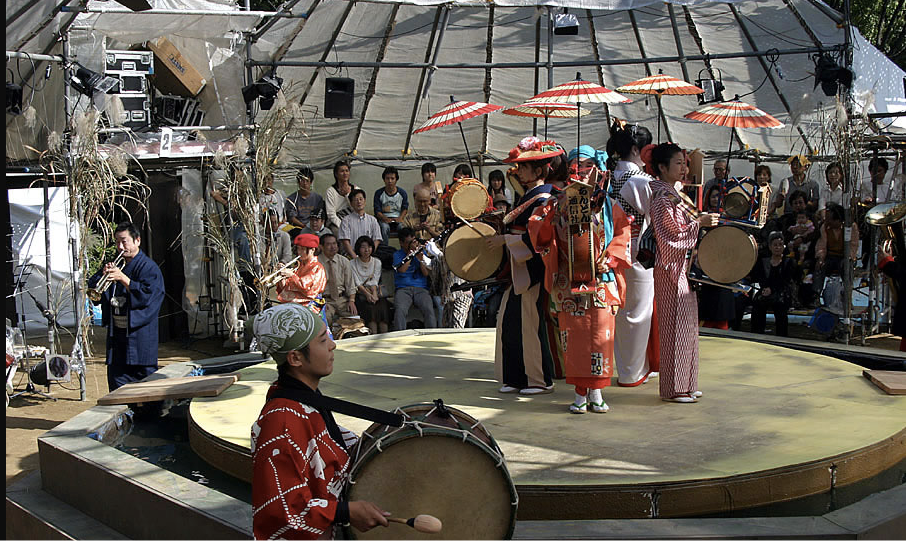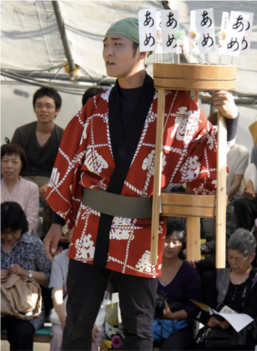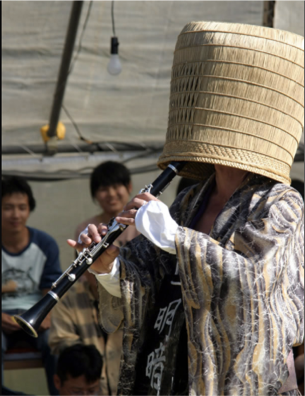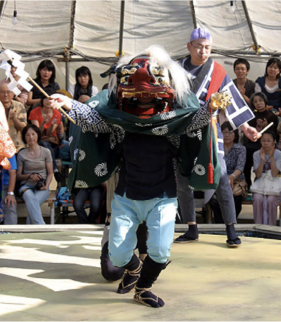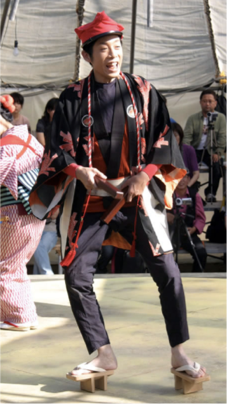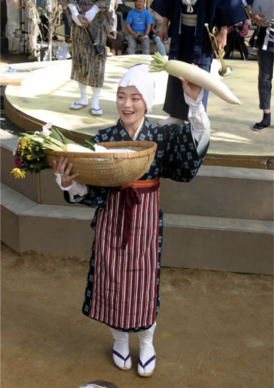Chapter 2
1) p. 64 - 67 Chindon-ya and enticed children
2) p. 69 "Autumn Colors, Bustles of the Wild Desert"
Below: Street vendors and performers depicted in the speculative historical theater, written by Hayashi.
3) p.70 Sound of Kane
